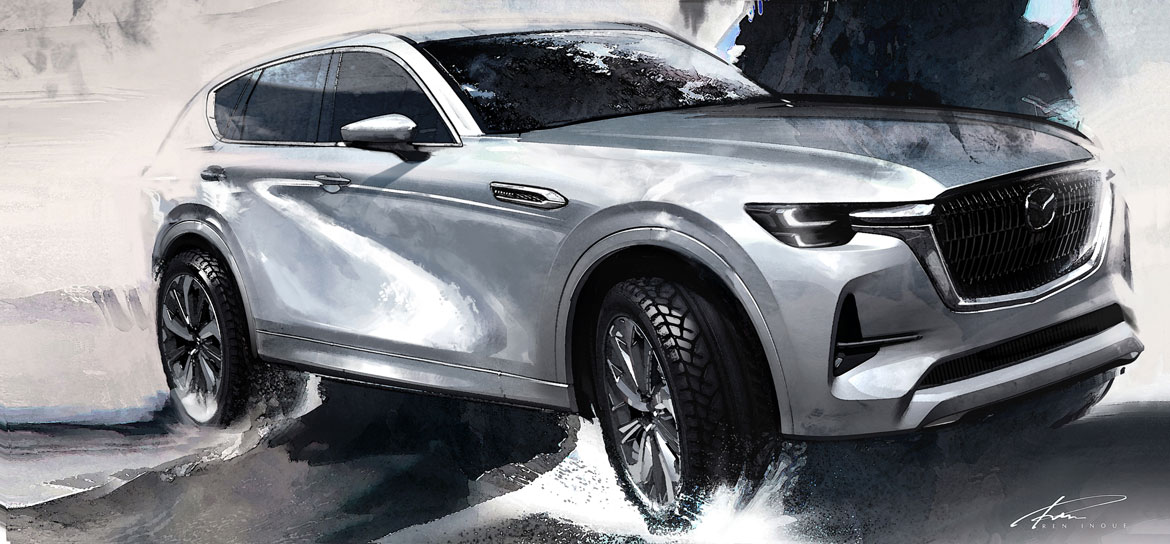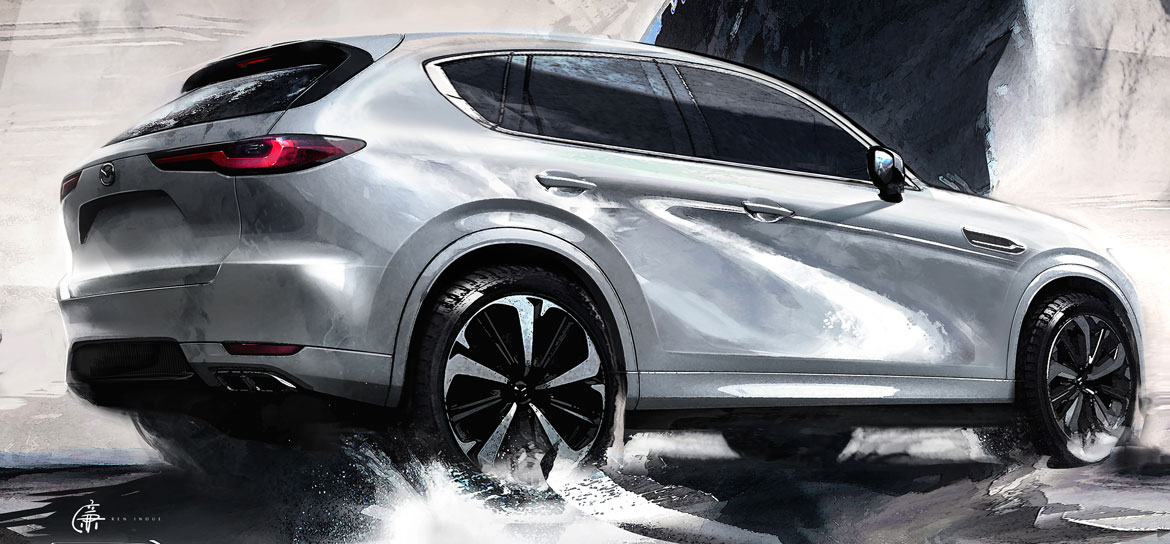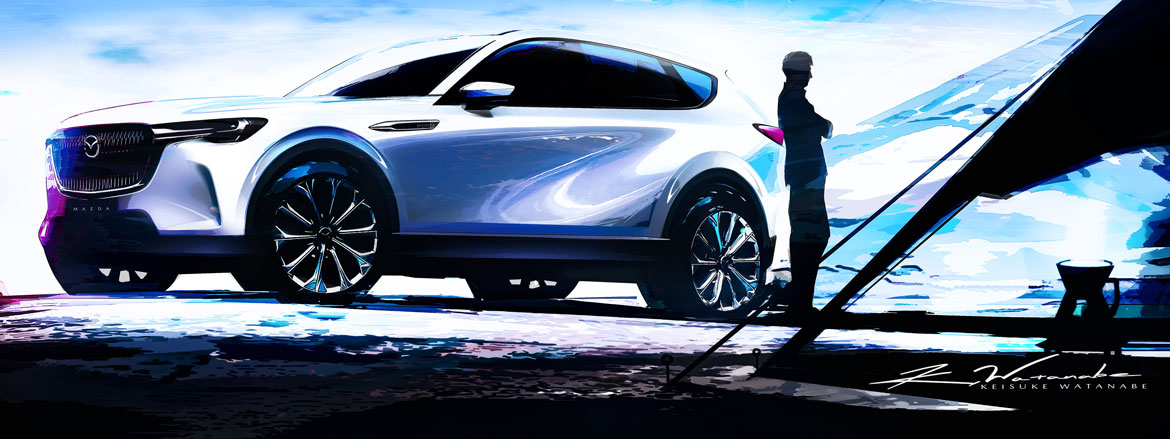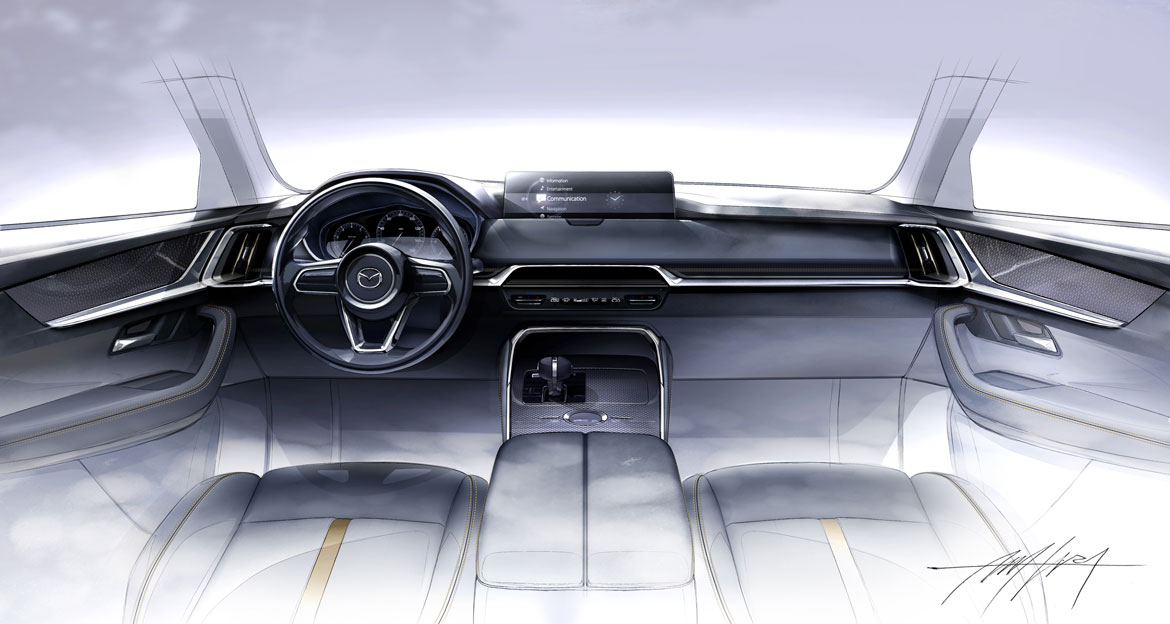The decisive, full-bodied front end, with its vaguely squared-off light clusters, immediately speaks of an uncompromising road presence. Mazda prefers noble toughness and soon reveals a more marked ambition than usual: «The new CX-60’s architecture with its longitudinal engine and rear-wheel drive, as well as all-wheel drive, has made it possible to achieve perfect, classic proportions, with a long bonnet and short overhangs», rejoices Jo Stenuit, head of design for Europe, as images of the 2017 Vision Coupé concept, a still highly relevant manifesto of an approach that is finally being realised, flash across a screen.
Plays of reflections
«Once again, we would like to highlight the link with Japan and its tradition of craftsmanship: this was a fundamental reference point for the definition of certain portions, starting with the sides» which, even to the least observant beholder, recall the visual effect already displayed on Mazda3 and CX-30, by achieving peculiar plays of reflection deriving from the continuous comparison, in the study phase, between manual sculpture and mathematical models.
A new colour
To make the most of the new line, the CX-60 also makes a debut with a brand new colour that enhances light, i.e. Rhodium White: after Soul Red Crystal and Machine Gray, this is the third paintwork to be processed using Takuminuri technology, specific to the company and capable of guaranteeing particular depth. Between the lines, one senses the pride in having completed, even in terms of colour, a quality enhancing process.
Premium finishes
The attainment of these intentions is even more evident in the interior, which reveals a design look that is decidedly aimed at the premium segments. «We focused massively on the finish, playing in depth with the influence from the Land of the Rising Sun. On the light-coloured Nappa leather upholstery of the top-of-the-range Takumi version, for example, a dark ribbon stands out, inspired by the mottled fabric of certain kimonos, while some areas of the dashboard feature Kakenui stitching that deliberately allows a part of the material underneath to be glimpsed»..
Two innovations
So you are welcomed by a modern cabin that is all but aseptic and far less digital than some of its competitors. Without, however, forgoing two important innovations: «The first consists of a seat adjustment device that suggests the correct position to drivers based on their height and the position of their eyes, and then automatically resets it by using facial recognition software, if the car were to be lent to someone else. The second is a reversing camera capable of reconstructing the area around the car, on the display, as if the bodywork were transparent, with a very intuitive result».
Traditional robustness
These invisible solutions, but deeply rooted in Japanese attention to practicality, are accompanied by a pleasant element of traditional robustness: the large tunnel between the front seats which, although taking up space, recalls the pleasure of driving just as the door is opened. «After all, the CX-60 is technically conceived to be the next materialisation of the Jinba Hittai spirit, the fusion of man and machine so well represented by the MX-5» concludes Jo Stenuit. Between dexterity and dynamics, we see a novel concept of prestige.
(Full article in A&D n. 254)
















